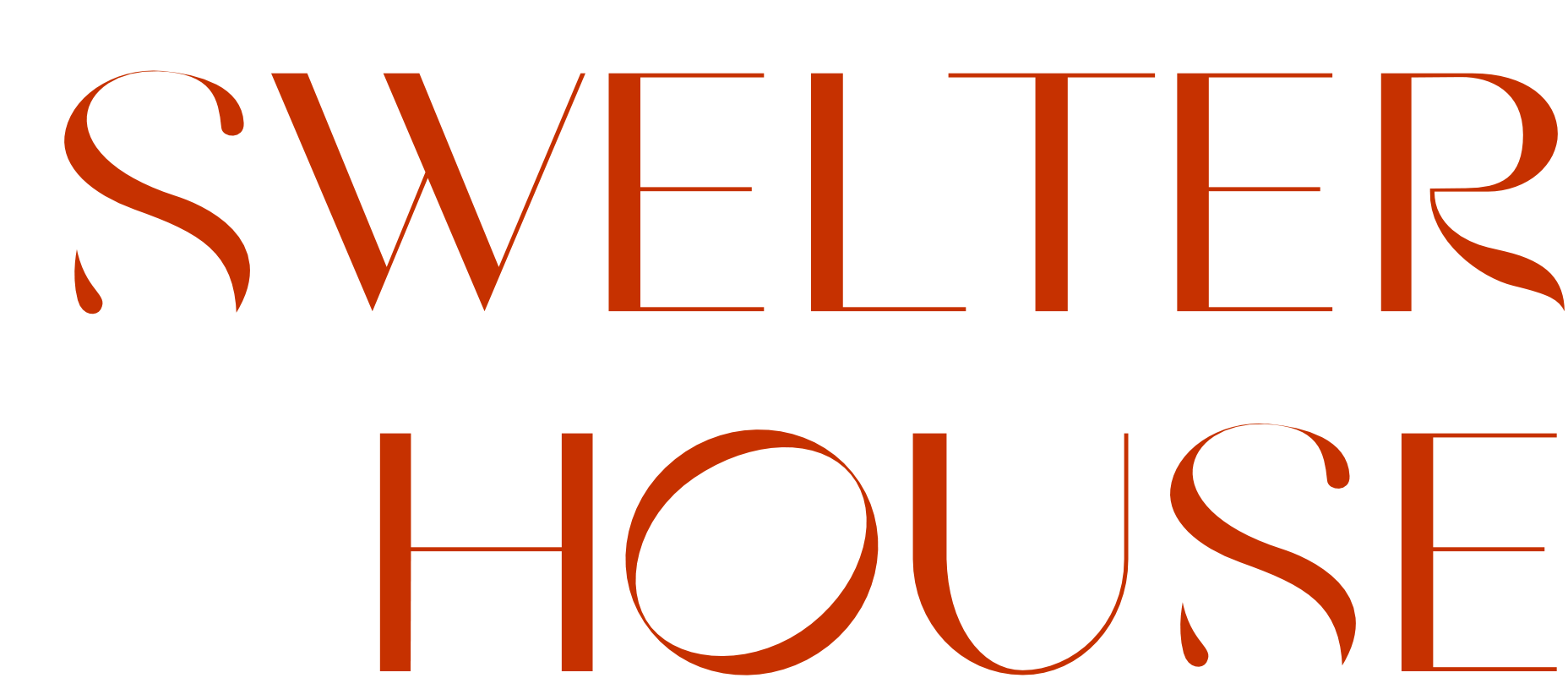Since The Swelter House is often an auxiliary structure in an existing vernacular, various models ensure one will be a good fit for a client’s realm. By providing varied roof pitches, an array of cladding and roof materials, and a selection of fenestration options, the house can be customized to create a look that works for one’s property. For the interior we’ve tapped three great American Manufacturers, Urban Electric, HENRYBUILT and The Nanz Company to provide lighting, cabinetry and hardware to compliment these structures. While we’ve created an initial three models to demonstrate the various combinations, one is not limited to these combinations. By mixing components and materials, one is invited to create their very own one-of-a-kind Swelter House.
2020

At the front of our collective inspiration, the 2020 is the prototype Swelter House. Possessing a relatively shallow 4 to 12 pitch gable standing seam steel roof and with horizontal cedar “novelty board” siding, the structure houses the key elements to accomplish the goals of relaxation, social interaction and the healthy routine. Cleft-cut stone and vertical 10″ wide cedar paneling create the rustic luxury the best embodies the true elements of fire and water. The modern pendant and sconce selection will allow our client to fine tune the decoration. Other variations on the 2020 are available and elements may be exchanged amongst the models. But be advised that the 2020 was the original and therefor the essential Swelter House.
2010

Twenty-first century luxury with the rusticism that is inextricably linked with the Finnish sauna tradition. Flat roof, horizontal cedar siding and the cleft cut stone floor create the perfect environment to experience the Nordic cycle and engage with friends and family. Thermopane modern windows with vertical muntons work well with the look. Lighting and hardware is indefinable and engages the look and feel of the participants.
1970

Again simplified with a nod to the artists among us, the 1970 combines the simplicity of epoxy floors and batten walls with the 11 to 12 pitch gable roof. Uniquely equipped with round windows in the sauna and powder room it also has a giant triangular window in the eve of the pools deck area. Again lighting and hardware are painted to a clients taste and included with all the other features that make the Swelter House all that it is.
1960

This post war House departs drastically from other models. Inspired by creative escapes of East and West coastal homes, the flat roof and picture glass windows work well with cedar siding. Simplified inside with epoxy floors in lieu of stone and batten and plywood walls but with all the other details, the 1960 is both the simplest and usually the most affordable model. Period lighting and fixtures elevate the structure and make it reminiscent of what one might experienced in Big Sur during the summer of love.
1920

A Dutch gambrel roof is the preeminent feature in the 1920 model. Sided with cedar shingles and using the same for the roof the House has a visual singularity which promotes the sculptural appearance. Through multi-paned windows one glimpses the cleft-cut stone floor and cedar lined walls lit with customizable painted lighting. A coarsely knurled round knob is the hardware choice and may be provided in either nickel or brass.
1880

Featuring clapboard siding and a rolled metal gable roof of 11 to 12 pitch, the 1880 is derivative of a simple farmhouse. Fenestrated with multi-pane windows and an interior walls of vertical 10″ cedar boards and a cleft cut stone floor the 1880 shares the correct rustic interior which is proper for the structures purpose. Here the lighting is reminiscent of hanging kerosene lighting and harkens to the late 19th century. Fittings are simple round knobs with period details. As is true with much of the elements, mixing components between models is permitted and even encouraged.
1770

Taking a queue from an 18th century New England saltbox, the 1770 features an 11 to 12 gable roof. It’s distinctive steep pitch was designed to clear snow accumulation from the roof and is a hallmark. Red cedar shingles with a 10″ exposure for both the walls and roof are similarly linked to it’s 18th century ancestry. Finally we use multi pain windows to complete this exterior vernacular. Unable to make large glass panes but eager to light their homes, colonists would assemble many small panes to create the 18th century picture window. Featured on either of the long elevations, this is yet another distinctive feature of the 1770. The lighting is of the lantern variety and includes an oversized pendant for the epicenter of the structure and sconces for the balance of the house. A riff on an 18th century molding is the featured motif for the door levers.

